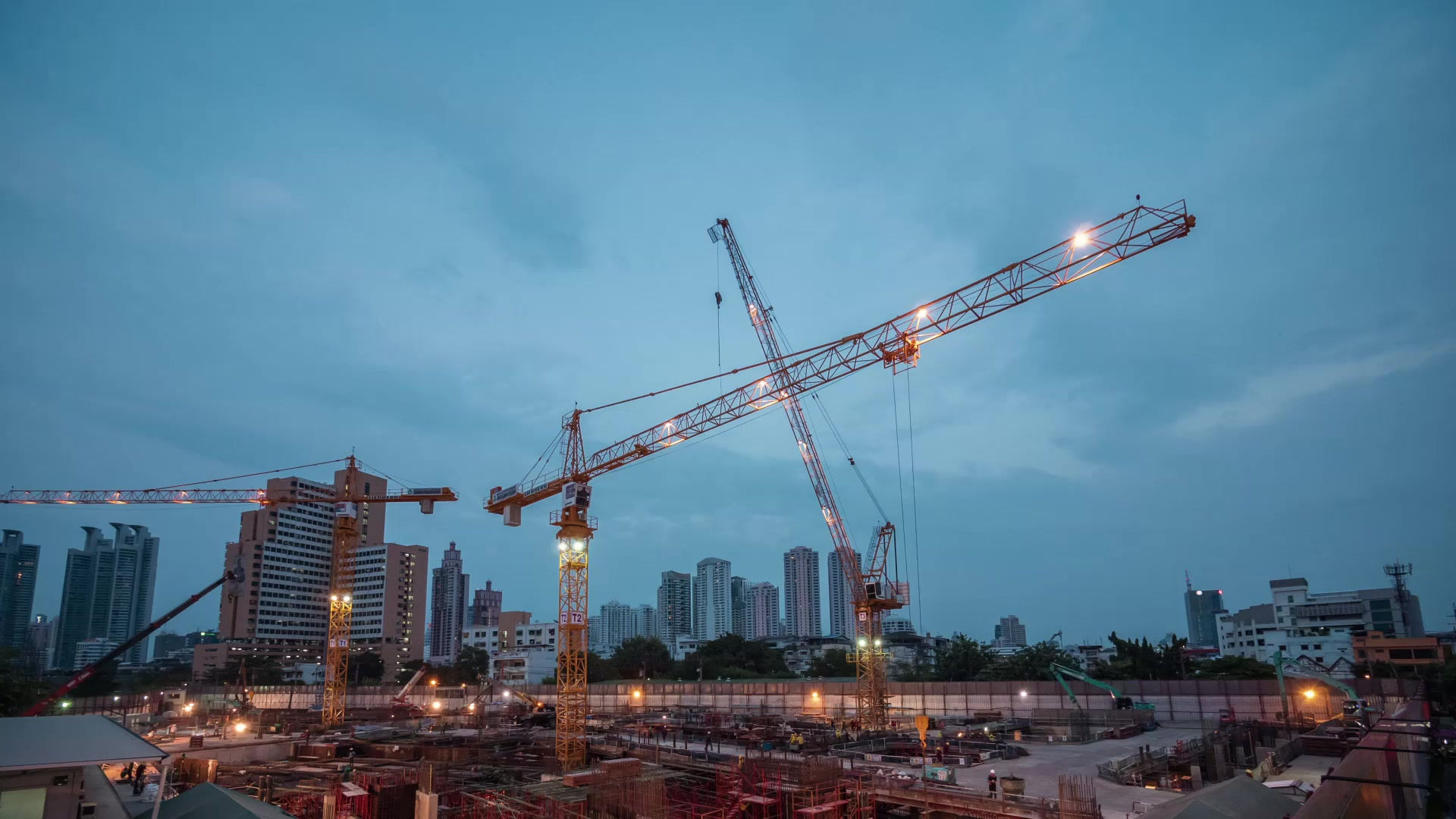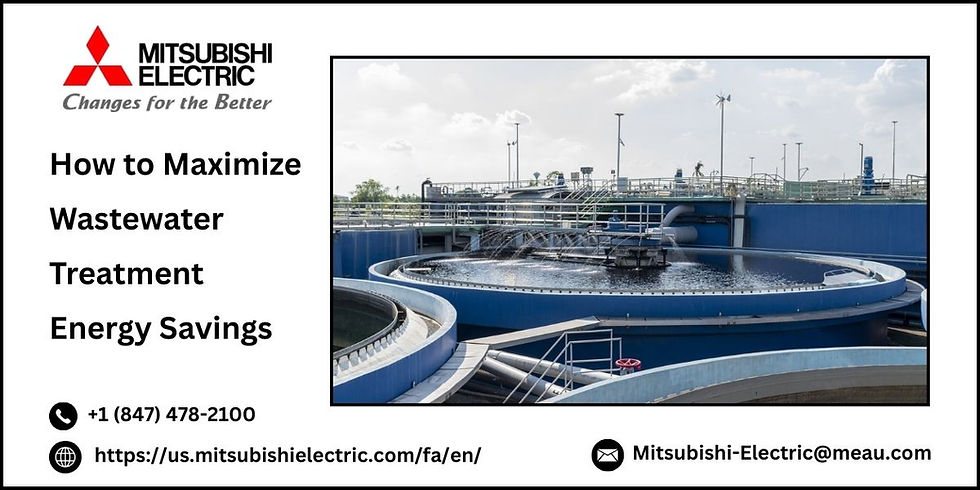How to Maximize Wastewater Treatment Energy Savings with Automation?
- mitsubishielectric1
- Aug 7
- 4 min read

Energy usage in wastewater treatment plants is still a serious operational issue. Although essential to public health and the environment, the treatment process tends to be extremely energy-intensive to drive pumps, mixers, aeration systems, and machine tool stations. Yet this need not translate into constantly increasing utility bills. With automation, plants can realize substantial energy savings without diminishing treatment effectiveness.There are many options to maximize wastewater treatment energy savings.
Let's explore how contemporary automation techniques are capable of reshaping the economics of wastewater management.
Why Wastewater Treatment Energy Efficiency is Important
Wastewater treatment facilities are among the biggest energy users in municipal systems. Aeration itself is responsible for over half of the entire power consumption. With increasing energy costs and mounting regulatory demands, operators are now looking for more intelligent means of lowering power demands.
This change is not merely about cost savings. Maximizing energy utilization also reduces carbon prints and fits in with more extensive sustainability objectives. Automation, done correctly, can be instrumental in balancing performance and efficiency.
Knowing the Power of Automation
Automation technology at wastewater facilities employs sensors, control software, and machine learning to check and refine processes constantly. They don't simply report information. They respond to it.
Key automation features in this instance are:
Real-time monitoring of energy consumption
Sensors monitor where energy is being consumed most heavily and point out inefficiencies.
Dynamic response control systems
Automated reasoning systems can vary motor speeds, aeration rates, or valve timing according to process requirements.
Predictive maintenance on machine tool stations
Equipment diagnosis foresees faults, minimizing downtime, and preventing wasteful overconsumption of energy.
Through connecting these technologies, plants can break free from rigid schedules and human monitoring and instead fine-tune operations for actual needs.
Smart Strategies to Enhance Wastewater Treatment Energy Savings
Rolling out automation is only successful if it's focused and deliberate. These are some areas to concentrate on:
1. Maximizing Aeration with Smart Control
Aeration is important for decomposing organic material, but too often tumbles on longer or more arduously than required. Automatic control systems with dissolved oxygen sensors can adjust blower speeds and airflow supply. This delivers only enough oxygen, neither more nor less.
2. Incorporating Variable Frequency Drives (VFDs)
VFDs control the speed of motors driving pumps and blowers. When used in an overall control system, they enable equipment to ramp down or up based on current flow and load situations. This dynamic strategy avoids undue power consumption during low-load conditions.
3. Automation in Sludge Handling
Sludge treatment is a highly energy-consuming stage. The automation of operations like thickening and dewatering can result in more accurate operations, less rework, and more overall energy efficiency.
4. Synchronizing Machine Tool Stations with Demand
In equipment that employs machine tool stations to support or maintain mechanical operations, synchronization becomes important. Real-time maintenance schedules or demand for use can trigger machine tool operation, as opposed to constant or time-based logic. This minimizes idle energy consumption and increases equipment lifespan.
5. Predictive Analytics and Remote Access
Today's SCADA systems provide remote control and visualization of data. But control is only half of it; predictive analytics can forecast future load shapes and optimize for future conditions. Such systems do not just respond, they anticipate.
Case in Point: Automation Success in Real Facilities
Facilities that have implemented automation in phases tend to start by conducting energy audits to locate low-efficiency areas. After installation, even minimal automation, such as motor controllers and simple sensors, has yielded quantifiable returns.
One municipality realized a 28 percent reduction in energy expenses after installing oxygen-based aeration management and load-responsive pumping methods. The outcomes came in one year and involved no extensive mechanical overhauls, simply smarter coordination of automation tools.
Considerations Prior to Automation
Automation is great, but the switch has to be planned out. Some key items to consider:
Begin with data.
Learn about existing energy use prior to selecting systems to automate.
Spend money on training.
Staff have to know how to operate and keep the new technology running.
Phase the implementation.
Begin with the largest energy users, test the impact, and grow from there.
Select versatile platforms.
Automation equipment needs to adapt as technology becomes available.
How Machine Tool Stations Are a Part of the Equation
While not typically at the forefront of wastewater energy conversations, machine tool stations within support infrastructure have an unobtrusive yet energy-consuming role. Automated stations, especially for scheduled maintenance and repair cycles, minimize unnecessary runtime and prevent the risk of equipment overload.
For instance, centralized control of tool stations utilized for cleaning, valve refurbishment, or pump maintenance can prevent them from running unless they are needed. Connecting them with maintenance management systems forms an efficiency loop that eliminates both labor and energy waste.
Final Thoughts: Turning Automation into Savings
Wastewater treatment is no longer simply a matter of complying with regulations. It's now a question of doing so efficiently, sustainably, and at a cost. Automation closes that gap.
Through the lens of smart implementation, whether in terms of oxygen monitoring, pump control, or more intelligent utilization of machine tool stations, plants can rethink how they consume energy. This isn't something for the future. It's a current opportunity.
Take the Next Step
If you're on a municipal or industrial crew looking to lower the cost of running things and boost efficiency, it's time to consider automation seriously. Start by taking stock of what you've got now and finding quick wins. Bring in professionals who know the technology and also understand the quirky beat of your building.
Conserving energy doesn't mean a complete tear-out and rebuild. It's just a matter of smarter operation of what you've already got.

.png)



Comments